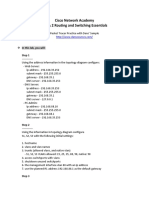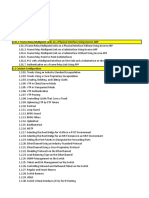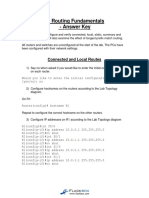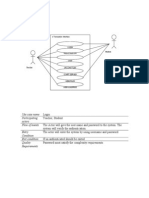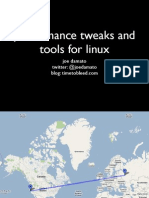0% found this document useful (0 votes)
19 views16 pagesLayer-3 Exercises
The document outlines a series of lab exercises focused on Layer 3 networking, including static and dynamic routing with OSPF, iBGP, and eBGP. Participants will work in groups with specified IP addressing schemes and network topologies, performing configurations and tests on routers and switches. Each group is assigned a unique address space for further partitioning and must maintain configurations throughout the exercises.
Uploaded by
Mónika KellerCopyright
© © All Rights Reserved
We take content rights seriously. If you suspect this is your content, claim it here.
Available Formats
Download as PDF, TXT or read online on Scribd
0% found this document useful (0 votes)
19 views16 pagesLayer-3 Exercises
The document outlines a series of lab exercises focused on Layer 3 networking, including static and dynamic routing with OSPF, iBGP, and eBGP. Participants will work in groups with specified IP addressing schemes and network topologies, performing configurations and tests on routers and switches. Each group is assigned a unique address space for further partitioning and must maintain configurations throughout the exercises.
Uploaded by
Mónika KellerCopyright
© © All Rights Reserved
We take content rights seriously. If you suspect this is your content, claim it here.
Available Formats
Download as PDF, TXT or read online on Scribd
/ 16



